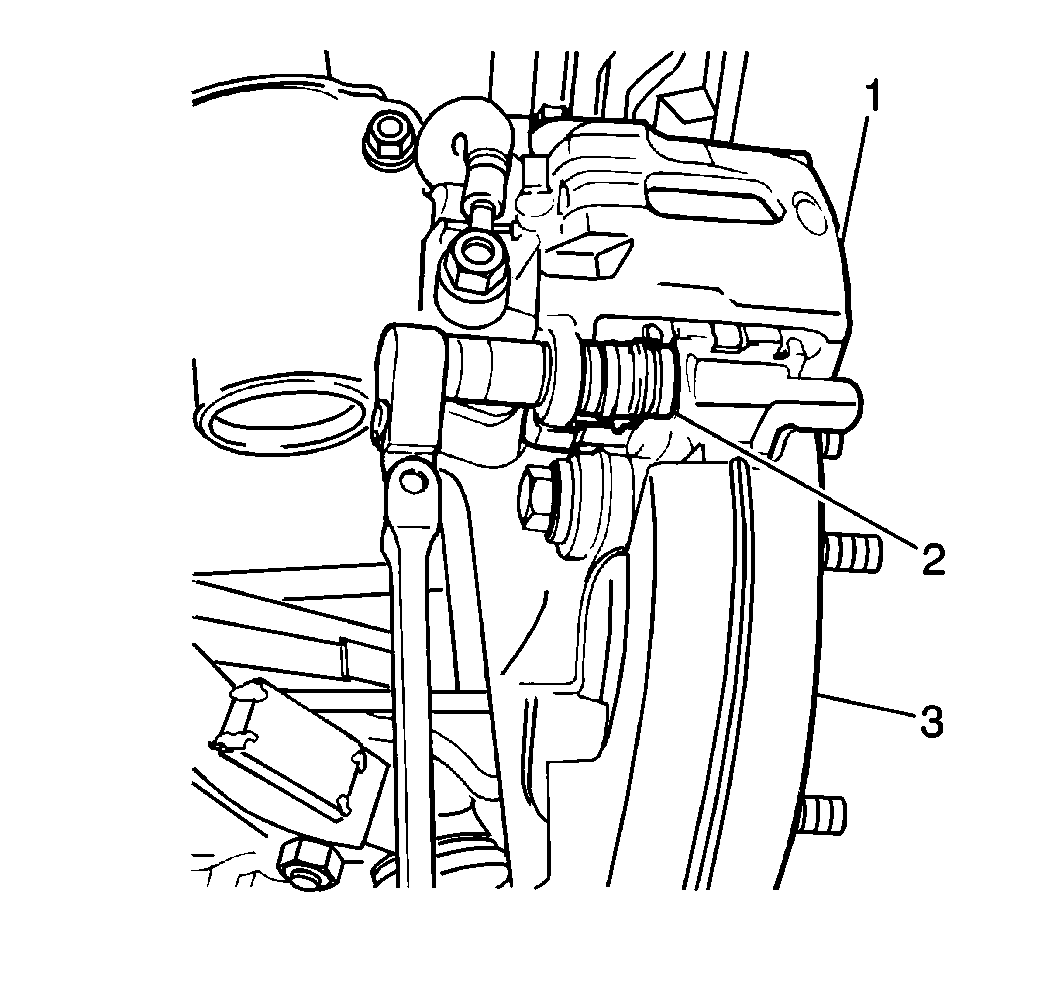Removal Procedure
Caution: Avoid taking the following actions when you service wheel brake parts:
• Do not grind brake linings. • Do not sand brake linings. • Do not clean wheel brake parts with a dry brush or with compressed air.
Caution: Brake fluid may irritate eyes and skin. In case of contact, take the
following actions:
• Eye contact--rinse thoroughly with water. • Skin contact--wash with soap and water. • If ingested--consult a physician immediately.
Notice: Brake fluid will damage electrical connections and painted surfaces. Use shop cloths, suitable containers, and fender covers to prevent brake fluid from contacting these areas. Always re-seal and wipe off brake fluid containers to prevent spills.
- Remove two-thirds of the brake fluid from the master cylinder reservoir using a siphon or the equivalent.
- Raise and support the vehicle. Refer to Lifting and Jacking the Vehicle in General Information.
- Remove the tire and wheel assembly. Refer to Tire and Wheel Removal and Installation in Tires and Wheels.
- Place a container below the brake hose in order to catch escaping brake fluid.
- Remove the front brake hose fitting and the 2 washers from the caliper.
- Remove the 2 caliper pin bolts (2).
- Remove the caliper (4) from the caliper bracket.

Inspection Procedure
- Inspect the caliper. Refer to Brake Caliper Inspection .
- Inspect the brake rotor for thickness variation. Refer to Brake Rotor Thickness Variation Check .
- Inspect the brake rotor for lateral runout. Refer to Brake Rotor Lateral Runout Check .
- Inspect the brake rotor surface. Refer to Brake Rotor Tolerance .
Installation Procedure
- Install the caliper (1) to the caliper bracket. Secure with 2 caliper pin bolts.
- Install the brake hose to the caliper.
- Install the 2 washers and the brake hose fitting.
- Install the tire and wheel assembly. Refer to Tire and Wheel Removal and Installation in Tires and Wheels.
- Lower the vehicle.
- Fill the master cylinder reservoir. Refer to Master Cylinder Reservoir Filling in Hydraulic Brakes.
- Bleed the brake system. Refer to Hydraulic Brake System Bleeding in Hydraulic Brakes.
Notice: Use the correct fastener in the correct location. Replacement fasteners must be the correct part number for that application. Fasteners requiring replacement or fasteners requiring the use of thread locking compound or sealant are identified in the service procedure. Do not use paints, lubricants, or corrosion inhibitors on fasteners or fastener joint surfaces unless specified. These coatings affect fastener torque and joint clamping force and may damage the fastener. Use the correct tightening sequence and specifications when installing fasteners in order to avoid damage to parts and systems.
Important: Ensure the boots fit into the grooves securely.

Tighten
Tighten the caliper pin bolts to 27 N·m (20 lb ft).
Tighten
Tighten the fitting to 23 N·m (17 lb ft).
Caution: Remove all the air from the hydraulic brake system anytime the hydraulic brake system is opened for repair. The entire bleeding procedure must be followed. Failure to remove all the air in the hydraulic brake system will result in reduced braking performance and possible personal injury.
Notice: If any brake component is repaired or replaced such that air is allowed to enter the brake system, the entire bleeding procedure must be followed.
